THE MEGA EQUIPMENT COMPLEX
THE REFORMATION OF THE CONSTRUCTION EQUIPMENT INDUSTRY – PART THREE
OVERVIEW
The time has come to improve on classic business models, tools, technology and infrastructure comprising the Construction Equipment Industry and serving end-users/customers at all levels. Consider a future including expansive service centers operating “24/7” with hundreds of bays and techs servicing all make and models, achieving economies of scale and enhancing customer experience through lower costs, improved quality, UPTIME & convenience. Contemporary comparisons for “THE MEGA EQUIPMENT COMPLEX” (MEC) include Tesla Production and Sales, Amazon Distribution and “Buc-ee’s” Service Stations -> MEC’s would inherently require large footprints due to the unique service provided, distance between locations and civil aviation facilities adjacent (ideally) to these sites.
The most recent article in this series – “The UPTIME App” (October 31st) – introduced a conceptual “universal inspection tool” addressing the need for “data-driven profiles” (cradle-to-grave) for equipment assets and informational standardization as foundational for the industry. MEC’s build on “The UPTIME App”, advancing the inevitable industry evolution with contemporary, more appropriate structures (admin, tech, brick & mortar) and methodologies: offering process standardization, breadth of service and cost efficiencies in lieu of the multiple “legacy verticals” models employed by dominant manufacturers, each independently vying for market share with proprietary solutions. Capital investments made by OEM Equipment Dealers, forced to replicate large expenditures, then passing the resulting global costs onto customers is inherently inefficient, considering the competitive forces in-play (domestic and global) and the availability of proven technologies.
Regional OEM Dealers should be the first tenants to lease bays in each MEC facility, leading to the consolidation and reinforcement of a customer-centric posture rewarded with acceptance and loyalty. Considering the true end-users of construction equipment (contractors) typically employ a diverse mix of brands and models, the laboratory for standardization and delivery of optimal solutions should be one which emulates and encompasses this reality.
THE MEGA EQUIPMENT COMPLEX (MEC) includes (not limited to) the following –
- “Last Mile” sites near Interstates and other Major Highways, open 24/7
- 150-250+ Service Bays of varying dimensions and equipment, available on long-term leases
- Full Machine Shop facilities for repairs, rebuilds -> machines/powertrains/hydraulics/refurb
- Parts Warehouse/Facilities for OEM Parts, Reman, Capital Spares, etc
- Component Rebuild Center (CRC) level service -> (cleaning/tooling/benches) per OEM specs
- “Standard Jobs” for major repairs & rebuilds, paint – pricing and scheduling available online
- Dynamometers -> several, including up to 3500-4500 Horsepower power plants
- High-Velocity Oxygen Fuel (HVOF) Service + Traditional Hydraulic Cylinder Repair (Chrome)
- Scheduled Oil Sampling (SOS) – full service, all makes & models (with OEM form trend analysis)
- Complete Paint (including Sandblast, Decals) and Fabrication Shop for custom metal work
- Training Facilities for Service Techs, classes, accreditation -> Apprentice to Master Tech
- Operator Training Facilities – for lease to OEM Dealer and Independent providers
- Proving grounds for testing repaired machines under-load + Operator Training support
- Locker Rooms, Canteen and Rest Areas for personnel associated with leased spaces
- Office space -> Sales/Leasing, Warranty, Telematics/Tracking, Service & limited Rental Staff
- Autonomous Equipment & Control Pod Storage + Support –> design/testing/logistics/safety
- Technology Center -> diagnostics, telematics, autonomous support, auction services, etc
- ERP & Saas Technology Lab -> Implementation HQ, Testing Autonomous & NextGen Projects
- Online Auctioneer Services – administrative and operations support, inventory storage
- Storage Yards for lease returns, sales and limited rental fleet inventory
- Bonded Yard Space – for work on non-compliant (emissions) machines with government waivers
- Logistics office & spaces for providers (contract flat-rate service) within a defined radius
- Loop-Truck service (delivery/pickup) for components/parts daily with stops on a defined route
- Long-Haul Transport Load/Unload space -> ramps and lift equipment for outlying customers
- Containerization Facility, office & yard space for provider (competitive contract & standard rates)
- Spaces for service various providers -> tools, lubricants, uniforms, etc
- Exchange Outlet (wholesale) for PPE, OEM Swag, MEC Gear, sundries, packaged nutrition, etc
INNOVATION & ECONOMIES OF SCALE
Autonomous Equipment, Control, Networks & Tech Support -> the adoption of autonomous earthmoving equipment represents a significant shift in the construction industry, with an established foothold, it’s clear acceptance & adoption are trending toward increased interest & demand. Experience demonstrates that contractors prefer to access the latest solutions without committing to a significant upfront investment – most recently exemplified by the proliferation of medium-term equipment leases (in lieu of outright purchase or rental) over a decade ago, based on “work in pipeline” and acceptable ownership time horizons, typically 2-4 years.
Autonomous Equipment Packages are a cost-effective option for short-term civil works and land development projects, and MEC’s will broadly support providers regardless of brand. Rental agreements would include planning, site/plot programming, maintenance and repair services, reducing the burden of bids & selection for contractors, increasing their competitiveness in winning contracts.
Equipment Operators -> Supervised Autonomy defines the initial phase of this technology, as experienced team members shift their expertise gained “in the operator’s compartment” to programming and overwatch roles within on-site, climate-controlled control pods (offices), monitoring and managing 24/7 operation of machines not subject to fatigue. Jobsite Safety is a primary benefit and for the contractor, a cost reduction in labor and insurance outlays.
Service Techs -> will be engaged in all aspects of the industry, replacing marketing & sale staff outright as ambassadors to end-users, simply codifying what has been the case for decades – once a “new machine” is sold, the subsequent direct engagement (including initial Warranty) is primarily between Service Staff and End-Users. In the Autonomous Package scenario, Service Techs would ideally be present in the site/plot programming phase for assigned projects/customers.
Techs will also enjoy a new breadth of income opportunity via inspections of all machines (vintage to new) via “The UPTIME App” – perpetually rated within the platform, requested and rewarded for their expertise and historical accuracy assessing used equipment, earn based on merit. Techs will realize and solidify their undisputed role as the “backbone of the industry.”
Bulk Purchasing -> large service centers can leverage buying power to negotiate significant discounts on parts, supplies, and tools due to the sheer volume it purchases. A single-make dealer, with a smaller and more predictable demand, lacks this leverage, translating into lower costs for parts used in repairs, which can be passed on to the customer.
Specialized Labor -> with up to 200+ bays, the MEC can afford to employ highly specialized technicians for specific component systems (e.g. powertrain, hydraulics, electrical systems, fabrication, EV charging). Specialization leads to faster, more efficient repairs, reducing labor costs per job. A smaller OEM dealer might have less experienced technicians, who may take longer on complex, less common repairs.
Inventory Management -> The MEC can stock a wider range of fast-moving parts for various makes and models. This reduces downtime for customers waiting for parts and can be more efficient than each individual OEM dealer stocking parts for just their brand. A larger inventory also allows the center to predict demand and optimize stock levels, minimizing holding costs.
Facility Utilization -> 200+ Service Bays allow for maximum utilization of resources and internal mobilization to specialized service areas. The MEC can handle a higher volume of repairs, spreading overhead costs (rent, utilities, administration) across a larger revenue base. A single-make dealer inherently has underutilized bays during lulls in demand.
Training and Tooling -> The cost of specialized training and diagnostic tools can be spread across a larger number of technicians and jobs. MEC Management can invest in the latest technology and training for its staff & service provider tenants, ensuring high-quality deliverables across all makes and models. Smaller, less-funded OEM Dealers have budget constraints.
ENHANCED CUSTOMER SERVICE
One-Stop Shop -> Customers with mixed fleets (most) benefit from the convenience of having all their equipment serviced in one location, regardless of make or model. This simplifies maintenance management and reduces the hassle of dealing with multiple OEM Dealership branches with varying support infrastructure. The economies of scale achieved by the MEC will translate to more competitive labor rates and parts pricing compared to smaller OEM Dealer facilities.
Expertise Across Brands -> technicians gain experience working on a wide variety of equipment, developing a broader understanding of different technologies and repair techniques. This can be valuable in diagnosing and resolving complex issues an shared within the MEC’s tech training and accreditation activities.
Improved Turnaround Times -> specialized technicians, readily available parts, and efficient workflows contribute to faster turnaround times for repairs, minimizing equipment downtime for customers.
Flexible Scheduling & Logistics -> With an enormous number of bays and technicians, the MEC can offer flexible scheduling options (online) to meet the diverse needs of its customers. Reliable Flat-Rate transport contractors can relieve customers of using their own trucks & trailers when is makes most sense.
SUMMARY – assessing the confluence of current trends, artificial intelligence (AI), actors and influencers participating in the construction equipment industry – forming a rational view – the reality of a well-designed construction equipment service center, brand colorblind & leveraging economies of scale becomes clear.
The marketplace is ripe for disruptive solutions offering “best-in-class” value to customers with mixed fleets (most contractors), expanding service options & accessibility on a leveled playing-field driven by technology, enhanced UPTIME and reducing the cost of doing business.
Contact: Bret Creech, Cell/WhatsApp# +1-813-922-9840 / Email: info@mistermaquinaria.com
* My intention is direct engagement – joining a team involved in the application of technology throughout all aspects of the construction equipment industry – collaborating with others driven to provide the best possible customer experience.
THE UPTIME APP
THE REFORMATION OF THE CONSTRUCTION EQUIPMENT INDUSTRY – PART TWO
OVERVIEW
One of the most consequential liabilities present in today’s construction equipment sector is the lack of technology – broadly applied. As with most industries platforms exist to bring efficiency to our business activities, today they mainly focused on rental fleet processes, collections for damages, maintenance and parts & service fulfillment activities. Those commercially available technology solutions are becoming familiar brands and currently serve the low-hanging fruit of the industry by improving inefficient client processes & based on the provider’s revenue stream expectations. While a handful of savvy tech entrepreneurs have isolated “honey holes” – the industry remains behind the curve, fractured and ripe for holistic reformation.
The current landscape -> most scaled organizations employ state-of-the-art Enterprise Resource Planning (ERP, SaaS) solutions for their financials and “back-end” processes & tie-in third-party solutions specific to their needs. The tech newcomers in the equipment industry typically provide solutions based on “inspections and condition reports” with data entry (artificial intelligence assisted) on handheld devices & laptops, feeding their closed-source software: rightly so in “protecting” their time & financial investments. Then there are the “OEM Kingpins” serving their legacy strategy of vertical integration with solutions designed specifically for “in-channel branded assets” (ill-suited for allied gear) rolled-out to their Dealer Network – confining to say the least. As a practical matter, just try making sense of a CTS (undercarriage) report on a trade inspection for a CAT dozer, while viewing on another OEM’s proprietary inspection template – “rinse & repeat”, the examples are endless. Ultimately those who receive less, not more, are equipment owners & end users and those who attempt to arrive at fair and accurate asset valuations. The evolved tech providers are on the right track and should be keen to participate with a broader suite of solutions – meanwhile, the market deserves more, with the logical initial investment addressing the most basic space of “ongoing inspections and condition reports”. The roots of the platform will have an easy ride into the depths of the industry.
Conceptual deliverables & collaboration -> a robust app (iPhone/Android) solution will be developed with the breadth to document the complete and entire existence – original build, operational and commercial activity – of any construction equipment asset regardless of make and model. “THE UPTIME APP” is a cloud-based, neutral platform with an attractive premise: management of capital equipment assets, cradle to grave, regardless of make, model or category.
How the data is utilized will be driven by the market, and potentially limitless depending on the app structure, desire for platform standardization, QA/QC, management & monetization, sharing and/or licensing arrangements. Open-source software (OSS) or a workable variant would foster wide and accelerated acceptance versus a “closed-source proprietary” approach. The beauty of “open source” or “permissive-licensing (BSD-style)” solutions is unleashing the power of competition and innovation in an industry far behind the curve compared to others. While extremely important on many fronts, this area of discussion will be tabled – remain completely open – as participants and stakeholders chime-in with feedback and interest.
The UPTIME agenda delivers a comprehensive data-driven solution aimed at consolidating information typically residing in distinct locations & compiled by a variety of sources, many of which will be averse to sharing this critical data. As the use of UPTIME becomes embedded & required within lease contracts, insurance policies, end-user fleet and resale activities, etc, “the dominoes will fall” throughout the industry and replace (or assimilate) many of the current solutions in the fractured construction equipment space. Innovation requires conceptual thought, design based on experience & observation, acceptance and bringing new ideas to the market. The following commentary should be considered “do-able” as the winners will be our customers and the industry, regardless of certain resistance from sectors of the establishment.
What will UPTIME include and offer?
ORIGINAL CONFIGURATION DATA -> as machines make their way through OEM manufacturing facilities asset “build” data is uploaded to a file, consider a birth certificate for a machine asset. That data resides originally with OEM’s, of which the largest and well-known would not likely share outside their OEM Dealer network. Eventually, complete configuration data would become accessible downstream as machine assets are sold and the players involved in the sale & delivery (OEM Dealers, financiers, lessors, end-user/owners) would make the data available for manual input – UPTIME files will be populated with configuration data regardless of initial “pushback” by OEM’s, as each “Machine Asset Profile” (MAP) is created. Configuration specifications (SPECS) allow potential buyers in diverse geographical locations to ascertain the viability of any given machine for their use. All data is pertinent to the machine asset’s life cycle through varying phases of ownership.
LOGISTICS –> original OEM configuration data would include precise machine dimensions & weights (whole or broken-down) with options unique to each asset as defined by the “OEM Build Specs”. This “DIMS” data will allow inland and maritime freight organizations to accurately quote rates in a highly competitive space. “AI” generated transportation quotes will become the norm as the applied technology compiles and consolidates data, vessel availability, space & transit times, service options and rates for the global transportation sector. Much of the technology required for logistics exists or currently under development, simply needs to be pathed & interfaced.
ARTIFICIAL INTELLIGENCE (AI) -> basic machine configuration & DIMS data will be the standard by which future condition reports will be compared. When a machine asset undergoes modification implying changes to valuation, DIMS, etc – early UPTIME (Beta) will have “opinions” which will evolve to provide “reliable answers” – consider a dozer with “sweeps & screens” added, a truck with bias-ply replacement of original radial tires, or a loader/telehandler with “foam-filled” tires…value-added options & general marketability will be resolved via AI, neutral and relatively more efficient. Artificial intelligence will inherently play a vital role in the management & use of massive volumes of available data: from collection to compilation & analysis in a plethora of current and future applications.
MAINTENANCE & REPAIRS –> no data is more valuable for a machine asset than its breadth of available history, from replacing wear items to component exchanges & machine rebuilds. Capturing data varies as OEM’s have vertically integrated proprietary applications for their dealer network – historically experiencing significant falloff in reporting after original and/or extended warranties expire (typically 12 & 36 months respectively, limited by machine hours) and the OEM Dealer’s predominance fades. For example, it is common for sellers to tout “working versus idle hours” when marketing a machine early in the lifecycle, because that is when history is most accurate. Recognizing that OEM warranty periods run parallel to “OEM rules of infringement” (restricting sales outside a given territory) is important, and an understandable milestone for potential buyers expecting good historical data.
As machines become “used iron” and fair game for resale by all market traders, the secondary market (non-OEM Dealer) for technical service & repairs is composed of relatively few providers and applications, aside from the end-user performing routine tasks in-house (or not). Recall in many cases, machines are consigned to auctions by leasing companies, currently the predominant asset-owner class in the USA (see my article “Building Your Own Brand”, July 25th). QA/QC is influenced by provider competence, budgetary decisions & real outcomes in this phase and rife with blinders. As machines move through their lifecycles today, documenting complete and accurate data ongoing is precarious at best, making this functionality the most challenging to develop within “THE UPTIME APP” – while simultaneously providing the greatest commercial value to our industry, reflected in efficiency and cost savings, reduction in management hours and creating new revenue streams for users and service professionals up & downstream. Currently the availability of history for a machine with an expected life of twenty (20) years would inherently have little trusted data for more than half of that period. UPTIME will force drastic change in this area as part of “The Reformation of the Construction Equipment Industry”. A robust cloud-based platform for management of equipment assets, cradle to grave will be the “solution of choice” by addressing the void of historical data, thereby making well-maintained machines more valuable, longer.
DIAGNOSTICS & PARTS -> proprietary technical software and parts are controlled by OEMs and their Authorized Dealers, a subject that has been argued at the highest level, the U.S. Supreme Court. The “Right to Repair” movement – “If you own something, you should be able to repair it yourself or take it to a technician of your choice” – has resulted in legislation in some States but not yet resolved throughout the USA. UPTIME, over time, will drive the solution as grassroots market acceptance will force OEMs to respond to their customers’ desires and mitigate the risk of decreased resale values for their equipment. UPTIME will provide the tools to manage fleets comprised of various machine brands & models, mirroring the reality of end-user equipment fleets. Consider this issue & sharing of TELEMATICS data or access via third-party, subsets of the overall MAINTENANCE & REPAIRS cause and in the best interests of customers.
TELEMATICS –> networking communication platforms between OEM Dealers and End-Users of equipment assets. Capacity to remotely monitor machines in the field, detect abnormalities & alert clients, download ECU data (machine operation history) in reporting formats. The most favorable outcome for customers is a standardized transmission solution across all makes & models, avoiding the cumbersome and inefficient task of creating multiple software interfaces for something this simple. UPTIME can drive behavior to a resolution, with broad market acceptance based on leveraging the power of competition and innovation in the marketplace.
TRANSPARENCY – “THE DOMINOES WILL FALL” throughout the construction equipment industry as the OEMs and their Authorized Dealers who actively promote the sharing of information & data into the UPTIME solution will see resale values of their branded equipment assets increase relative to competitors who drag their feet in the face of market-driven evolution. Customers are much more likely to gravitate toward a used machine with easy-to-digest historical data, than one without…regardless of past preferences. “THE UPTIME APP” is a tool, long overdue, and only the next step in “The Reformation of the Construction Equipment Industry”.
How will UPTIME be used & who will invest in development?
MARKET CONSOLIDATION & CHANGE – the argument in favor of a user-friendly cloud-based app to manage equipment assets “cradle to grave” has been contemplated long before now, at least in other industries. The fact that sectors of our industry are being served “a la carte” where entrepreneurs have identified potential revenue streams speaks to that. Some of those entities may form part of UPTIME development, become assimilated or acquired as the UPTIME build-out serves more users and gains momentum. Detail and discussion of a predictable industry evolution – with foundations based on this conversation – will be addressed in the next article “FUTURAMA” (third in this series), outlining the continued migration of investment away from the classic “New Sales Model”, forward to the “Parts & Service Centric” model & inherently driven by original OEM Product Quality. Supported by a landscape of highly-competitive aftermarket service, customers will evaluate, choose & value their equipment suppliers on equipment reliability & innovation, service experience & responsiveness and overall cost of ownership – less on new sales promotion and staff.
MONETIZATION, SALES & MARKETING – the UPTIME platform will bring supply & demand together in an efficient, user-friendly manner. Players in new or reconstituted roles offering “added-value” to processes and operations will share in the revenue streams generated within the construction equipment industry, replacing the stagnant or unsustainable. Organizations and individuals providing efficiency, cost reduction and value will emerge as they liaise with operations and support construction equipment users in all aspects of project management dependent on equipment productivity. Used Equipment & International Experts will be key players as secondary markets increase in importance.
LENDERS & LEASING INSTITUTIONS – with most new machines being delivered into the USA market on leases, these organizations would benefit more than any other single user, in my view. Lease contracts would include required periodic UPTIME inspections in the condition clauses to track compliance and ready machines for resale long before assets are returned. Addressing the pervasive issue of “predictable conflicts” as leases end and reconciliation of “required versus actual condition” is required, often delaying the process and/or redefining final disposition of equipment assets (for in-depth discussion see my article “Building Your Own Brand”, July 25th).
OEM DEALER PARTS & SERVICE – RENTAL FLEETS, GENERAL CONTRACTORS – no elaboration required
SERVICE TECHS, INSPECTORS – monetization and sustainable income will drive participation. Notwithstanding the guidance of artificial intelligence, well-trained mechanics will be the ideal first choice for inspections and documentation of the work they have performed on machines in the shop or field – equipment owners will have the option to hire techs for UPTIME inspections and related services, a rating system will allow both tech and owner to rate each other on a variety of KPI’s.
SOFTWARE DEVELOPERS – with ample opportunities in a barren tech landscape, this group will thrive and enjoy employment for many years.
SUMMARY – when a confluence of readily available technology meets an industry rife with inefficiencies, something must give. For those with vast experience and a penchant for business development – currently defined by technological advance – it is incumbent on us to impart knowledge in positive, productive ways. This discission is only beginning, meant to provoke rational thought and preparedness through dialogue about what we can reasonably expect & embracing impending change.
*Look for the final article in this series “THE MEGA EQUIPMENT COMPLEX” (January 2025) – addressing issues detailed above and further exploring how and where the industry will evolve in the next decade and beyond. Topics of discussion include vast, all-encompassing “Equipment Centers”, autonomous & remote-controlled gear, breakdown of traditional sales and retail behemoths and the ultimate dominance of parts & service providers.
It is my aim to forward the application of technology throughout all aspects of the construction equipment industry, regardless of scenario, partnering with organizations driven by delivering solutions and adding value to the client experience.
Contact: Bret Creech, Cell/WhatsApp# +1-813-922-9840 / Email: info@mistermaquinaria.com
BUILDING YOUR OWN BRAND (BYOB)
THE REFORMATION OF THE CONSTRUCTION EQUIPMENT INDUSTRY – PART ONE
OVERVIEW
“Building Your Own Brand” (BYOB) is a pillar of maintaining performance, productivity, market value and optimizing ROI for equipment assets. In the absence of an established brand and reputation (real or perceived), the prospect of achieving maximum returns on resale is diminished. This conversation is the first in a series of commentaries regarding “The Reformation of the Constructions Equipment Industry” – and focuses on actions equipment owners can take in response to a rapidly evolving market…
One year ago, the frequency of calls began to increase – voices of concern and distress at the malaise in construction equipment secondary markets – “how is your business?” Tones reminiscent of the housing market collapse and recession of 2007-2009. In an industry built on grit and egos, rugged individualism and hard work, it’s common for equipment owners to believe they can “gut it out”, when confronted with adversity – for the most part, in their experience, always have. What happens when they cannot, regardless of the reason or who they are?
To be clear, the concept of “equipment ownership”, has evolved over the last dozen years – a classic paradigm shift. While actual “ownership” was historically dominated by General Contractors (GC), Mines, Municipalities, OEM Dealer & Independent Rental Fleets – the landscape has changed. Leases have become the “quasi-ownership norm” of choice for several reasons: 1) month-to-month costs are far-less expensive than renting when coupled with the confidence of a solid projects pipeline; 2) leases offer limited financial liability on a manageable time-horizon, usually measured in two-year commitments; 3) CFO’s enjoy flexibility in accounting and options to extend usage to match project requirements.
In my observation there is a direct correlation between the dominance of equipment leasing and the recent and steady upsurge of “commodity-based” digital platforms in the marketplace: legacy titans, regional staples, new and rebranded online platforms – all responding to market demand with expanded services, competitive fee structures, claims of convenience and compliance with legal norms (auctioneers) associated with repossessions, disputes, court judgements, etc.
Today, the “Lessors” – commonly OEM Financial Divisions, Banking Conglomerates (Citi, GE, WF +) and an array of Rural Banks and Credit Unions – are the institutions “holding the paper” and legally the true equipment owners with a specific time horizon for earning revenue, followed by liquidation via sale into secondary markets -> rinse and repeat. While financiers are the new “dominant owner-class”, the end-user can usually exercise a buyout option (rarely used) based on the loan residual and/or current Fair Market Value (FMV). Financier Lessors prefer outsourcing operational management (maintenance, repairs, inspections, resale) of equipment assets, a difficult proposition considering the increasing volume of assets on their books. Intermittent market-makers currently fill the void, “Building Their Brands” with third-party equipment assets and digital content. Because “Financier Lessors” generally lack marketing infrastructure, brand recognition (BYOB), competent staff and efficiency to achieve maximum returns on resale – below average net proceeds are common and will remain an issue until an industry-wide reformation gains traction.
OEM Financial Divisions – the bulk of the “Financier Lessor” class – routinely experience delays in processing off-lease equipment for resale when “predictable conflicts” arise as leases end and reconciliation of “condition clauses” versus actual “returned condition” is required. These conflicts arise when maintenance and repairs on leased machines are sidelined by “End-User Lessees” during the final phase of the lease. Financier Lessors may require the inclusion of “Total Maintenance & Repair” (TM&R) contracts offered by OEM Dealers (Service Departments) within their lease documents, but those costs are often considered prohibitive by End-User Lessees, who balk & commit to maintaining the equipment themselves. Competent OEM Lessors mandate third-party inspections be performed approximately sixty (60) days prior to end-of-lease dates, allowing them to prepare for what’s just ahead. While OEM Dealers (executors of the OEM Financier lease docs) have no direct financial liability as machines are returned, they do have potential issues as they navigate, manage and mediate the reconciliation of equipment condition…consider the details –
1) For the End-User Lessee, the OEM Dealer is the “face of the brand”, for the equipment and disagreements about who eventually pays for “deficiencies” defined in the lease condition clauses – often resulting in customer threats to take their business elsewhere
2) OEM Dealer Service Departments (in most cases) would execute the work they quote (based on the pre-return inspections) to bring the equipment into compliance with lease condition clauses
3) A machine with unsettled disputes is parked on the OEM Dealer Yards (often for months, free of charge) awaiting resolution as the OEM Financial Division Lessor strives to be “made whole” on their asset and greenlighted to resell at a price based on the “residual value” calculation, a major component of the original estimated revenue stream – assets in financial purgatory are not a good look on an OEM Dealer Yard
4) Saddled with condition deficiencies, groups of machines “in-dispute” are often relegated to “sale at auction” by the OEM Financial Division “Lessor” (recall the legal recourse issue) – subjecting themselves & the OEM Dealer to sales results that could damage future retail sales opportunities of their OEM branded equipment
The collateral damage that can be done to an OEM Dealer’s reputation and brand is wildly unpredictable – all while never actually owning lease assets. Because the popularity of leasing is driven by customers, demand remains strong and does offer the OEM Dealer the benefit of improved market share in their territories. Expect little change in the near term.
Accurate as described, the scenario above is not exclusive to OEM Lessors, but highlighted first to demonstrate the vulnerability of a specific brand to this convoluted and inefficient process. Non-OEM Financier Lessors are exposed to the same off-lease delay scenario but generally apathetic to the OEM brand, ultimately providing more leverage to demand strict compliance to the “condition clauses” defined by their lease – they simply follow their End-User Lessee to the next OEM brand allegiance. The off-lease process model is flawed for all involved – a proverbial “elephant in the room” – which must be addressed throughout the industry, with a customer-centric focus.
Two distinct activities are in-play when an organization employs BYOB as strategy locally, at a distance, within the construction industry and on projects via asset management activities: 1) SHARING THE STORY, and 2) LIFECYCLES & TRADING IN EQUIPMENT ASSETS. Both should be considered “mission critical” regardless of business climate…as each complements the other creating rich organizational synergies. For example, if an equipment owner is listing their surplus equipment for sale on digital platforms pointing to their website, the traffic generated by potential buyers would inherently produce more “views” and surfing through the organization’s web pages -> BYOB -> possibly energizing a future employee, a contract for work or another quantifiable benefit. The discussion will focus on maximization of value, uptime and ROI of equipment assets from acquisition and utilization, through sale and transfer to future owners.
SHARING THE STORY – involves everything from signage & identifiers on equipment, vehicles, brick & mortar facilities and jobsites, hardhat decals, business cards, company logos and apparel -> to digital and social media, public outreach & recognition, association memberships & participation, advancement and hiring of employees, job postings, completed projects, etc. While enterprise success in execution and results vary, a holistic approach is key.
“Building Your Own Brand” (BYOB) in the public arena typically involves broadcasting the presence, reputation, ability to serve, mission statement and prowess of an organization, including but not limited to -> comprehensive value to the communities served, volunteerism and altruism (outreach, giving back), employee contentment and disposition, support of families, innovation and professional challenge, distribution of earnings, wages, industry leadership, skills development, peer ranking and perceived viability going forward. Observing trends over the last 5-10 years, it is clear “SHARING THE STORY” has become a more common and frequent activity in the construction industry, rightly so…backing it up matters! Allowing the public to share, witness and weigh the portrayal and messaging versus actual deeds can endear them to the organization, create synergies, sense of communal pride – even soften a blow when a reputation is challenged.
Large organizations tend to have established, in-house marketing & messaging activities assigned to Sales Divisions, HR or even C-Suite Executives with ultimate oversight and guidance – executed by staff immersed in company culture. In my experience, the most common “unforced error” at this level is subcontracting “BYOB” to marketing agencies that have little or no experience in the construction industry, organizational culture, and even require written “copy” from company staff to produce ongoing unique content. While nice graphic design and cool drone footage are welcome, exciting and fun to watch…void of compelling “storytelling” by a culturally savvy insider, the frills grow stale and eventually diminish desired impact in the marketplace. Established businesses often outsource missing pieces (i.e. graphic design, digital presence) and utilize an experienced industry consultant to manage & expedite BYOB projects to fruition, just as the contractor would rent machines to fill gaps in equipment packages needed for earthmoving and construction projects. For large organizations the goal of “Building Your Own Brand” (BYOB) should focus on “self-reliance” and driving traffic to their own media platforms, managed by internal staff. Maintaining a limited bench of business consultants and media production contractors is a good strategy for specific needs.
Medium and Small firms are prone to struggle more with “justifying costs” of BYOB, often assigning marketing & messaging activities to staff ill-equipped to take-on more tasks, lacking the skills, interest or time to be effective. Simply “throwing another log on the fire” can be detrimental to those charged with additional responsibilities, and ultimately the organization. None of these challenges change the inherent need to promote the organization in the public domain with adequate investment, talent (in-house or contracted) and ownership’s commitment to the cause. Competent and skilled graphic artists can be contracted or even found as temps via college intern programs. Having knowledgeable personnel dedicated to driving & developing or managing & approving unique messaging content is critical to success. Contracting an outside Project Manager to guide and assist in the initial design and implementation of the required platforms is a good option – very common – when they don’t have the talent and competence internally.
In the “Digital Era” communications platforms are either inexpensive or free, and required by our emerging leaders in the construction industry as future mediums of commercial activity. Organizations choosing to ignore clear trends risk becoming less relevant, less patronized by their customer base and miss potential for growth. Costs associated with “Building Your Own Brand” (BYOB) can be substantial – however, once a website, social media pages and email marketing engines are designed and built, monthly costs are quite reasonable and the technology easy to manage. Once an employee(s) is identified (aptitude) and trained, they usually enjoy their role, become immersed and highly motivated to learn as they liaise with others in the organization: contributing professionally, socially and even financially with new revenue streams.
At this point ownership and management must consider “team building” versus “outsourcing”, and the inherent value of each to the organization. Hiring a consultant to manage the project – initial assessment, design, buildout, training, testing, launch of BYOB platforms & handoff – is ideal, while removing the burden on staff and delivering results on time. In my view, paying a third-party monthly fee into perpetuity to maintain media platforms and manage content is nonsense. As third-party contractors move to their next projects, they naturally become less connected to your company culture and “the daily” – if you like an individual, retain them as a consultant or offer them a position on the team! Developing and maintaining internal ownership is best practice, creates organizational synergies and properly leveraged, will deliver payoffs for the enterprise.
LIFECYCLES & TRADING IN EQUIPMENT ASSETS – considering elements of “Building Your Own Brand” likely exist in some form (webpage, social media) and the relatively low-cost of enhancing or adding platforms – recognizing the value of earning goodwill in the public domain (locally and regionally) is already apparent. “SHARING THE STORY” offers a micro view of the organization and current footprint. Now we consider expanding viewership and geographical reach with the intent of “adding-value” (earned or perceived) to equipment assets by marketing to a larger audience far beyond the home-turf where the core business operates. The most significant and quantifiable payoff of BYOB lies in the discipline of trading (buying and selling) in equipment assets. Consider this…wouldn’t most people expect an industry leader (defined by excellence in execution of their core commercial activity) to maintain quality throughout all aspects of their business? Yes, they would, until or unless they have reason to believe otherwise. Recall the organization has been built on a vision to reach defined goals and deliver quality, rooted in perseverance, grit, rugged individualism and hard work. Adding effective, proactive marketing tools to your BYOB toolbox is the next step.
In my experience, one of the most common and egregious errors equipment owners make is overdependence on marketing platforms which build “their” brands and businesses with the equipment assets and digital content of actual asset owners, while owning none themselves – collecting fees and commissions essentially for project management and marketing. Most equipment owners are very familiar with the costs and lack of control associated with these service providers.
Online listing services, auctioneers and commodity-based marketing platforms have played critical roles in our industry for decades and added value in the process – no doubt that will continue – but those platforms and services should be considered only enhancements and components of the equipment owner’s resale strategy, not pillars. A common argument is “they have a critical mass of potential buyers” (valid) which sounds impressive…but how impressed should you be? How many of those potential buyers are redundant across several well-known platforms? How many of the platform users are truly considering your equipment asset at any given time? After signing-up, how much time and marketing effort will your high-value asset receive once it becomes a data point, part of a larger, homogenous offering? In my experience it is best to utilize only the equipment listing platforms as they tie-in easily to the proprietary website you have built, and where you intend to drive traffic.
Crafting an effective marketing strategy & achieving success includes the creation of esthetically pleasing online listings & posts with quality images, accurate condition and configuration detail – reliable delivery platforms capable of handling high traffic – seamless communication between buyer & seller – responsive and knowledgeable staff available for customer engagement. These are the essentials of “Building Your Own Brand” once the enterprise commits to trading in equipment assets and establishes “buy-in” throughout the organization. For most media services and consultants providing “SHARING THE STORY” support services, the “TRADING IN EQUIPMENT ASSETS” aspect of the business is “beyond scope” primarily due to lack of industry experience. Again, experience dictates the “equipment-owner, end-user”, develop and manage their own daily engagement with potential buyers – outsourcing does not get it done.
The equipment owner with well-maintained equipment inventory, in average or better condition, will employ BYOB to extract a higher return on investments (ROI), redirecting financial outlays back into their enterprise, reaping the rewards of DIY in managing their equipment assets. Be advised -> engaging potential buyers from different time zones requires flexibility and dedication – this is not a “9am-5pm” job responsibility – fortunately, most “first engagements” with potential buyers can be handled quickly on a handheld device. Allow your team players to innovate and perform uniquely within your organization under agreed terms: hybrid schedules, cross-training, remote work, incentives, freedom to create new business and be duly compensated.
Having been directly involved in these specific activities for two (2) decades inside top tier OEM Dealers (CAT, Volvo), the world’s largest equipment auctioneer and now my own brand for over six years – learned what it takes to build successful marketing infrastructure & sell equipment domestically and worldwide. Consider some of the following potential benefits of “Building Your Own Brand” as an equipment owner and entrepreneur ->
- Control and manage your equipment assets, maintaining value and ROI
- Market & Sell equipment on commission for others who do not
have the capacity and skills - Engage in business development leading to new incomes streams
- Become a magnet for pre-Tier-4 equipment (< 2012), sell into
international markets - Offer inspection services to “Financier Lessees” with leased
equipment in your region - Be a compensated storage option for “Financier Lessees” (they pay
their bills) - “Build Your Own Brand”
in markets where you may someday operate - Maintain a keen awareness of market trends allowing proactive
moves before others - Improve your own fleet with situational awareness, picking-off
good deals on equipment - Attract skilled talent into your team from everywhere, keep them
offering opportunity - Develop a team who thrives on professional challenge and
opportunity - Network with industry peers you otherwise may have never known
- Maintain an entry point for new employees to be assessed for
future roles - “Build Your Own Brand”
where you currently operate and fortify organizational strengths - Stay current and innovative as an enterprise, become a leader in
applied technology - Be prepared for the future and ensure enterprise viability
*Look for the next article in this series “THE UPTIME APP” (Q4/2024) – addressing issues detailed above and furthering the outlook for the industry, implications, recommendations
Mister Maquinaria LLC – is a version of the marketing engine detailed in this discussion, now in our seventh year. The next phase of our business development is consulting into the “equipment-owner, end-user” space delivering BYOB via Project Management. Our methodology is based on embedding ourselves with the client, at their direction, demonstrating best practice and training client staff with our platforms as models. Clients define their goals, we feedback with ideas and framework. Projects typically range from a few weeks to six months, or more, until agreed goals are achieved.
Contact: Bret Creech, Cell/WhatsApp# +1-813-922-9840
Email: info@mistermaquinaria.com
Construction Equipment Outlook 2019 – North America & Export
Industry news has been conflicted regarding the economic outlook for 2019. As a company who is in the “trenches” daily working with industry leaders and equipment users worldwide, we believe there is a significant need to reestablish export channels into reliable secondary markets outside North America. Over the last several months OEM Dealers, Trade Association Members and other owners have increasingly expressed concern over their limited options for expected and orderly liquidation of equipment inventories.
Starting the 2019 New Year with the effects of increased Federal Reserve rates, the nuisance of a “Trade War cloud” and record partial shutdown of the US Government: this year is unique to say the least. The United States GDP annual growth through Q3/2018 was 3.5% and reflected a red-hot construction market widely believed to be unsustainable going back to last summer. Currently, most financial analysts anticipate a pullback this year, nuanced by volatility of consumer confidence and continued uniformity of the pessimism regarding the United States and broader world economy. We agree, believe the US Economy has strong fundamentals and anticipate a soft-landing into a 2.0-2.5% GDP growth range.
The Construction Equipment industry is a leading economic indicator and much has changed since the “malaise of 2007-2011” brought on by a collapse of the US housing market – but much has also remained the same, mainly options. Secondary markets for used construction and earthmoving equipment continue to be limited to the domestic playing field, mainly due to the expensive & cumbersome bureaucracy of modifying Tier IV machines (engines) for export and use internationally with locally available fuels. The “world region model” that characterizes current OEM behavior does not lend to changes, and manufacturers won’t purposely enable their North American Dealers to engage in this activity. Void of the historical “safety valve” for exportation of used machinery into Latin America/Caribbean, Africa, the Middle East and elsewhere – owners have a looming problem.
Some aggressive OEM & Independent Dealers are actively fortifying their capability for international trade via acquisition of non-EPA Compliant machines (Tier II, III) from other regions, shipping them to Free Trade Zones (FTZ) within the USA with intent to resell internationally. These players are setting themselves up for future throughput by ensuring their export sales activities are adequately staffed, supported and ready for an increase in business. In lieu of “de-tiering”, they are currently playing the only game available to them as OEM Dealers
Ritchie Bros Auctioneers (RBA), an industry bell-weather, covered 2018 sales targets domestically due to a strong US economy. We expect their marquee event next month in Orlando will marginally eclipse the record-setting US$278MM of a year ago, which was their first February event post-acquisition of “IronPlanet”. As a market-maker, RBA has yet to introduce a solution for Tier IV (interim, final) machinery being refitted for export, and thus, shares the experience and consequences of limited international trade in their core asset group.
Meanwhile, our industry continues to suffer as existing trade platforms remain outdated, fragmented and generally inefficient compared to other industries. Fee-based tools and websites which emulate and facilitate age-old behaviors have taken some shallow roots, but it’s not enough. End-users need complete platforms which simplify direct involvement and control in the trade of their equipment (usually their largest single capital expense) at a reduced cost. Expect “new players” to emerge, challenge and compete in the sale of quality used equipment currently being relegated to local brokers, auction houses, and via trade-ins on the sale of new machinery – options which relinquish significant value as owners do not perceive better solutions.
The next phase of our economic cycle will be the first real observance of a market dominated by Tier IV machines entering secondary markets in North America. We anticipate equipment owners will seek solutions in a new landscape which include an international component. The low-hanging fruit are machines produced prior to 2012, or, “pre-Tier IV” machines, which generally require no engine modifications for use overseas. Tier III machines (2007-2011) are perpetually in high demand in a very diverse international market, as are the Tier II predecessors. With our first-hand experience in the “de-tier for export” process at the OEM level (CAT, Volvo), we are increasingly being approached for discussion by organizations throughout the industry. Necessity is the “Mother of Invention” on the “de-tier for export” front, and solutions outside the OEM channel do exist.
To learn more about our export and other services click here
3-2-1…Lift-off for “Mister Maquinaria”
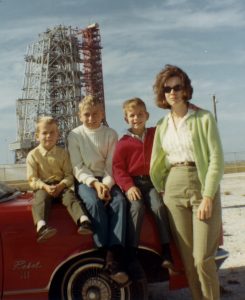
As a “Space Race Brat” born to Parents who lived in Brevard County, Florida & were employed in the Space Industry fresh out of high school (late-1950’s), those insightful parental tech nerds made it my business to engage and leverage technology from an early age (see photo at Pad 39A and Apollo 11, I’m in red). In hindsight, the habitual application of technology has been a fruitful gift.
While Technology, the Digital Age & Social Media have changed most aspects of life as we know it, the construction equipment industry is a prime example of “old habits dying hard”, when secondary markets and participant behavior are considered. The current landscape is painted with auction houses, dealer-to-dealer networks, antiquated websites, poor marketing platforms and even locals attempting to DIY on Craigslist – as with the “late adopters” of the Space Race, the current state of our equipment industry demonstrates collectively we are some of the last to understand it and use it to it’s full potential.
The fact is, most equipment owners/users are not equipped to manage the marketing and sale of their used iron – they wisely invest their time in estimating, bidding, winning and executing projects, as it should be: but something is missing. At the end of the efficient life of machinery it is common to accept low trade values, sell machines to intermediaries and auctions: all paying/netting typically 65-80 cents on the retail dollar. The lack of in-house staff and supporting network charged with creating increased net worth for machinery assets affects competitiveness for contractors and other owners/end-users.
Mister Maquinaria has now “gone live” with our website and set to leverage the power of our global database for email marketing, extensive use of digital and social media platforms & iPhones that have more computer power than Apollo 11 when it launched in July 1969.
Contact us at your convenience to discuss your specific needs – let’s launch a partnership to increase returns on your equipment!
Ritchie Bros Orlando sets records across the board in February
The final result: US$278 Million in gross auction sales, all unreserved – Ritchie Bros Auctioneers did it again and set market values across 12,500 lots of construction equipment over six days.
As expected late-model, low-hour gear was in high demand for domestic end-user’s as the US Economy remains strong – sellers have the advantage in the marketplace on all platforms as supply is squeezed.
Latin American, Caribbean and other International players showed a resurgence of this buyer-base, swarming the Tier III gear, rarely being outbid during the week.
Ritchie Bros has some tweaks to make – it comes with the territory – but considering the impact last year’s acquisition of Iron Planet had on sale volume they pulled it off well, congratulations on a great event!
Mister Maquinaria is ready to assist international buyers in locating and purchasing the machinery from reliable sources in the USA – contact us and let’s talk machinery and exporting!

Ritchie Bros Orlando taking it to the next level after IronPlanet acquisition
Three weeks ago we were onsite checking out the iron and the gross sale estimate was $195MM, now that’s been obliterated with the latest estimate rolling in above $275MM – apparently RBA & IronPlanet are “Better Together” as the early media tagline suggested. If the primary goal is volume then this should be no surprise, be ready to reset your marks as the previous high was $203MM in 2012.
Who will be there and what should we monitor to better understand our market?
Late-model, low-hour gear will serve to quench the domestic end-user’s appetite as the US Economy remains hot, providing sellers the power position in the marketplace. We believe prices will be retail (as is typical) and the spectacle of the environment will certainly provide some bidding behavior of note.
Expect to see Latin American, Caribbean and other International Buyers swarming the pre-Tier IV gear, rarely being outbid: a resurgence of this buyer-base.
During the sale and after the dust settles a hot topic will be the simultaneous sale of iron sold “as-is” with descriptions on the RBA Orlando Yard versus the online offerings of remote equipment complete with IP-style inspections. Suffice to say Ritchie Bros will intensely monitor the results, attitude of their clients and trends – as will we.
Look for Mister Maquinaria staff all week and let’s talk machinery and exporting!

Tier III machines expected to hit USA Resale Market in 2018
It’s been several years since we’ve seen Tier III & older legacy machines on the US Resale Market in a big way, I see that changing in 2018. Contrary to what many believe, the US Export Market is not dead, it simply took an extended break due to supply issues, not a decrease in demand. Historical buyers found machines to import from other regions (mainly Tier II & III units from Asia) in lieu of their traditional US-based sources.
Tier III units in the US market produced/delivered between 2008 – 2012 will represent the bulk of this export opportunity. In my view the upcoming market will offer a large volume of this iron (trades, fleet buys, etc) beginning in Q1 2018 and extending a few years as significant inventories tap-out: it is a finite resource. Most “post-recession end-users” who held Tier III machines in lieu of purchasing Tier IV-interim machines in the 2011-2014 time-frame will move forward and out of those aged, higher-hour units as confidence in the United States Economy propels new machine sales.
For makes/models with historical overseas market acceptance, “pre-Tier IV machines” will again flow into the Latin American region and other parts of the world. Having a relationship with an experienced, bilingual/fluent and seamless connection to those customers will be crucial in capitalizing on this opportunity. Social Media & more contemporary Marketing Solutions will commonly be used alongside classic Email Marketing Campaigns. Overall 2018 should be a good year for US Machinery Exports and the annual milestone February Auctions in Orlando are just around the corner as a measure, stay tuned…Prospero Año Nuevo!

USA Lease Returns – Tier IV-interim
A rare buying opportunity is currently available with Lease Returns in the USA. In the past few years many contractors have elected to take advantage of the attractive leasing options offered by manufacturers and dealers all over the Country. As leases reach their end large volumes of machinery are coming available each month in the USA.
Inherently these lease return machines are Tier IV-interim and prices are depressed across all makes and models, presenting overseas buyers with an excellent opportunity to “De-Tier” these machines and the glut in the USA market. In my opinion the best-case scenario is exportation of such units to overseas markets needing good quality machinery at reduced pricing.
It is clear some customers are taking advantage as we have seen examples of contractors from Mexico, Central and South America obtaining machines through various sources, “de-tiering” and putting them to use alongside other machines acquired through dealer channels.
We are interested in hearing about your experience, that of fellow contractors in your Country and interest in this relatively easy process. Let’s begin the discussion!
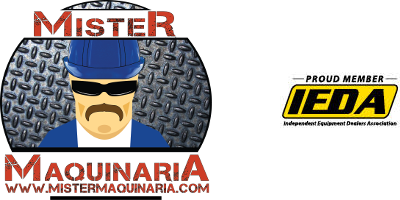

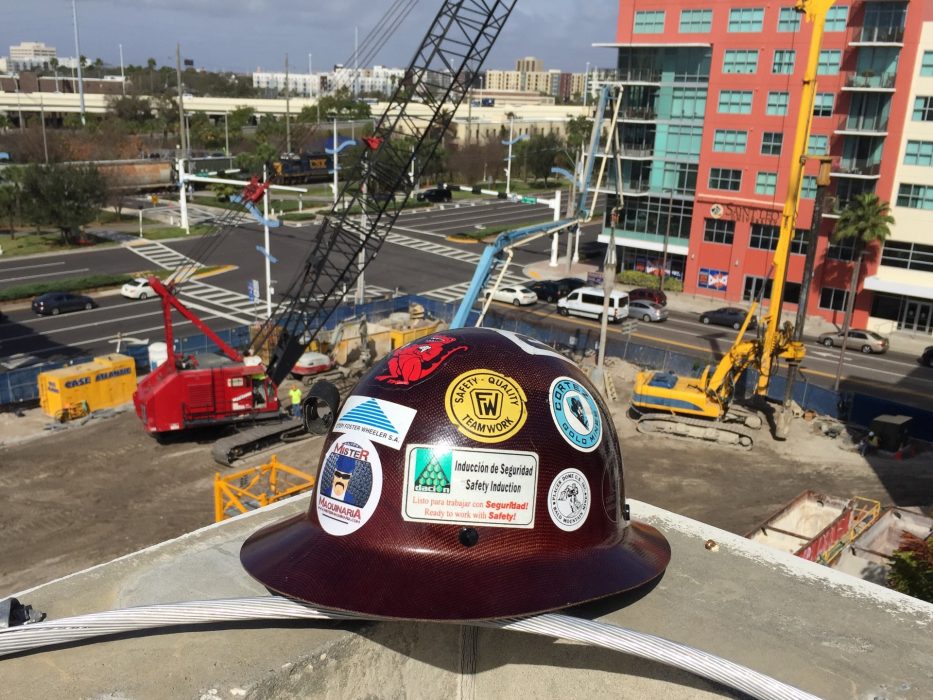
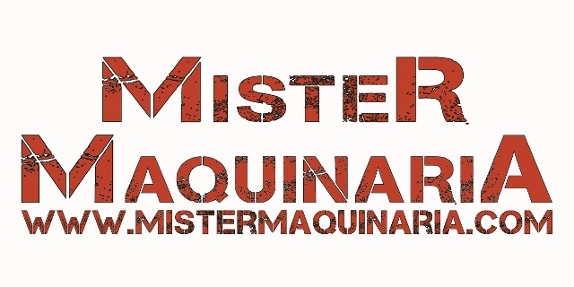
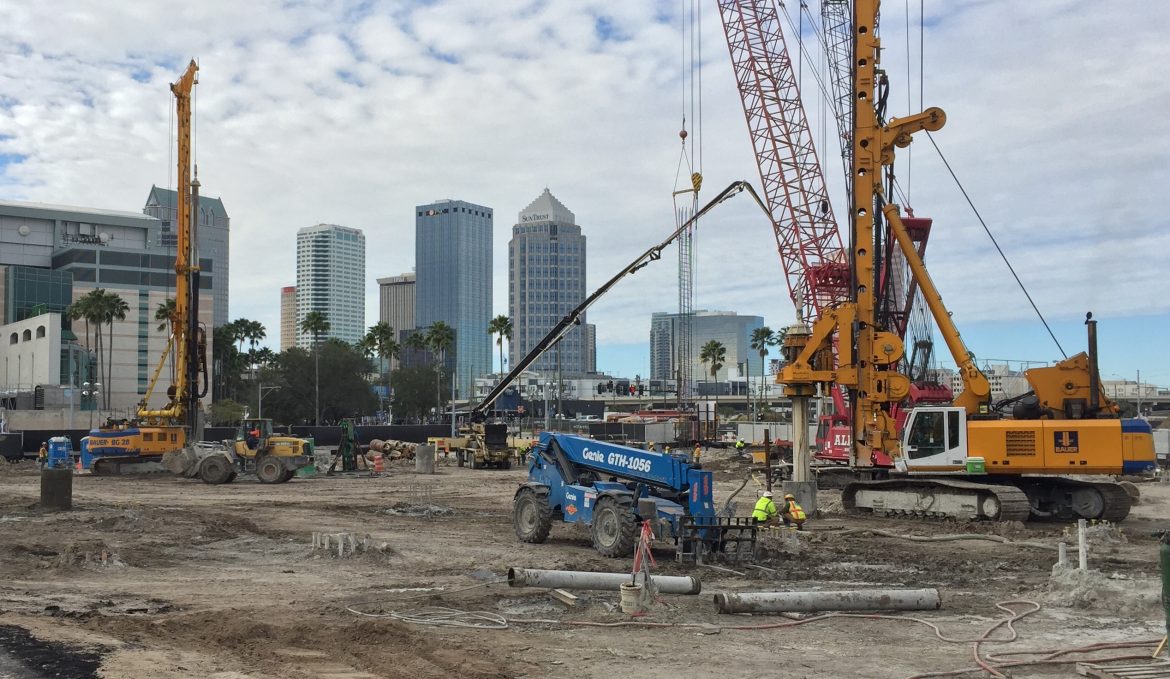
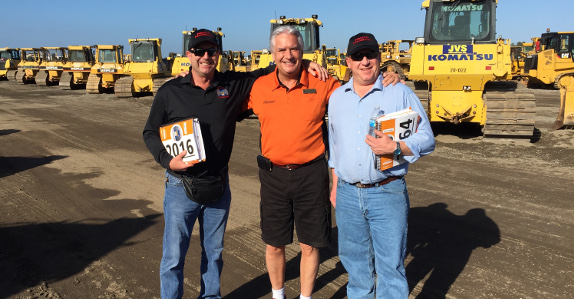
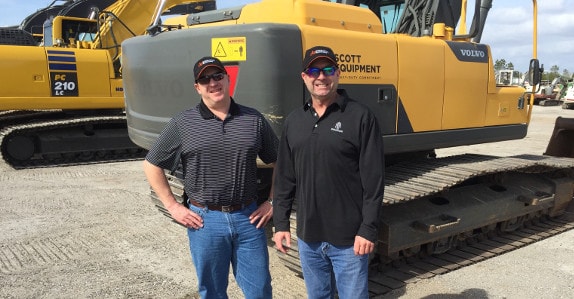
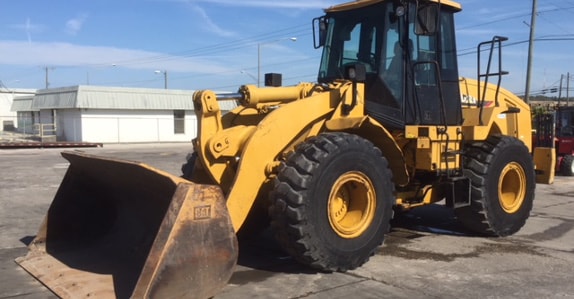
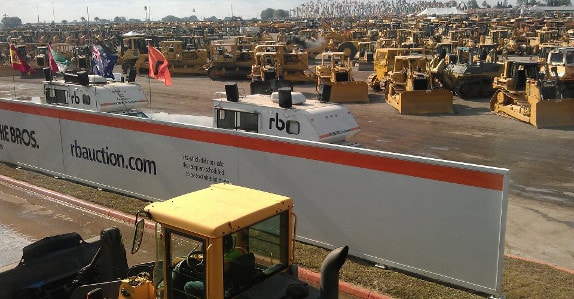
Recent Comments